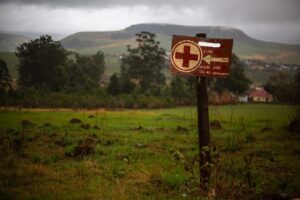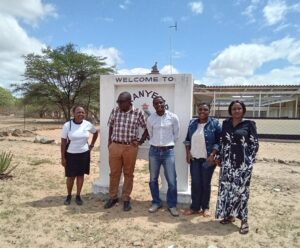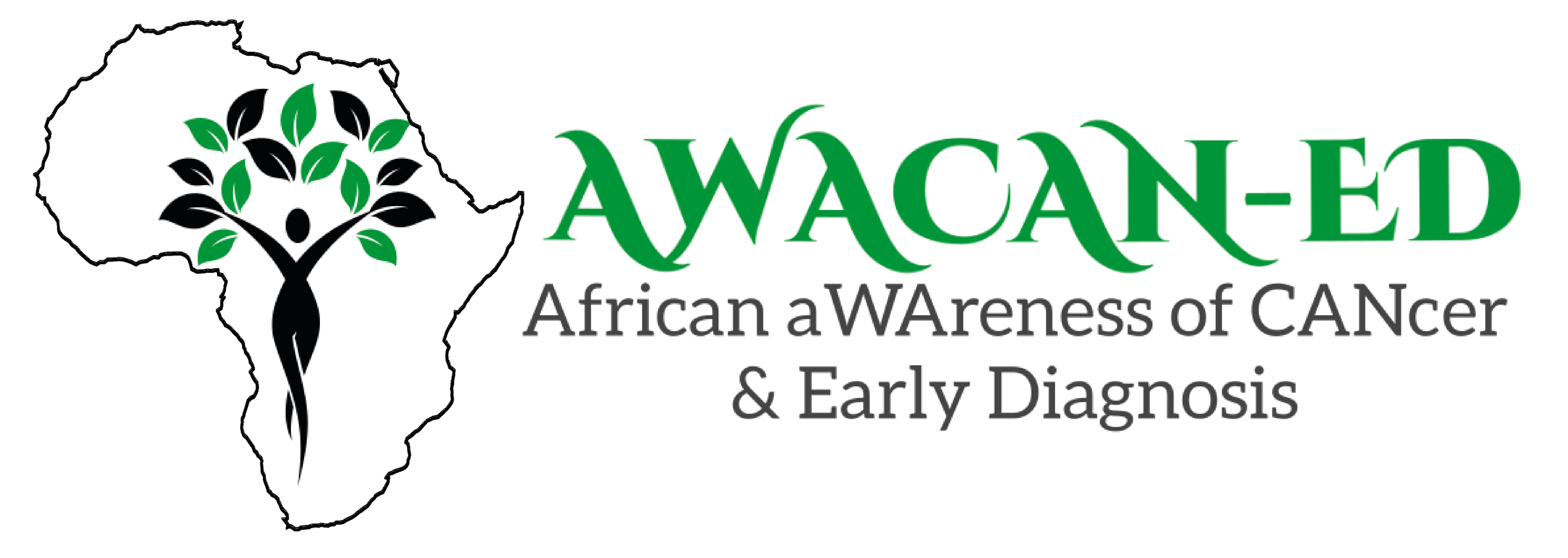Understanding Diagnostic Pathways and Digital Health Opportunities for Cancer Care in Southern Africa
 Against a background of rising cancer morbidity and mortality in Southern Africa, two recent publications from the AWACAN-ED team explored how healthcare workers in South Africa and Zimbabwe navigated the complex challenges of diagnosing breast, cervical, and colorectal cancer in resource-limited settings and investigated whether digital health technology (‘eHealth’) has the potential to expand access to healthcare, particularly for remote communities.
Against a background of rising cancer morbidity and mortality in Southern Africa, two recent publications from the AWACAN-ED team explored how healthcare workers in South Africa and Zimbabwe navigated the complex challenges of diagnosing breast, cervical, and colorectal cancer in resource-limited settings and investigated whether digital health technology (‘eHealth’) has the potential to expand access to healthcare, particularly for remote communities.
Through in-depth interviews, the studies explored the perceptions of healthcare workers (HCWs) who encounter people with symptomatic cancer across primary, secondary, and tertiary public health facilities in South Africa and Zimbabwe.
The first study1, published in June 2025 in BMJ Open, used the Model of Pathways to Treatment2 to categorise the barriers and facilitators to timely cancer diagnosis. It focused on factors that impact the “diagnostic interval” (the time between first possible symptom and diagnosis), and developed the following themes:
- HCWs’ perceptions of patient-level factors
- Financial limitations impact pathways to diagnosis
- Patients’ refusal, absence and delays in attendance
- Healthcare provider and system factors
- Poor referral and feedback systems
- Training gaps
- Awareness of protocols and guidelines
- Inappropriate and suboptimal clinical assessments
- Resource limitations
 Researchers note there is a complex interaction between patient, provider and health system factors influencing the diagnostic interval. To improve timely diagnosis of breast, cervical, and colorectal cancers in Southern Africa, strategies and interventions need to tackle both patient-related and health system challenges, while considering social, cultural, geographic, and economic inequalities that shape the pathway from symptoms to diagnosis. HCWs are also constrained by broader health system inequities, such as insufficient resources and equipment, limited training and supervision, non-standardised referral processes and poor communication within and between facilities. Building on what already works, such as using community health workers to follow up with patients, digital tools to improve referrals, and other local best practices, can help reduce delays and improve early cancer diagnosis.
Researchers note there is a complex interaction between patient, provider and health system factors influencing the diagnostic interval. To improve timely diagnosis of breast, cervical, and colorectal cancers in Southern Africa, strategies and interventions need to tackle both patient-related and health system challenges, while considering social, cultural, geographic, and economic inequalities that shape the pathway from symptoms to diagnosis. HCWs are also constrained by broader health system inequities, such as insufficient resources and equipment, limited training and supervision, non-standardised referral processes and poor communication within and between facilities. Building on what already works, such as using community health workers to follow up with patients, digital tools to improve referrals, and other local best practices, can help reduce delays and improve early cancer diagnosis.
The second study3, published in the JMIR in Jul 2025, explored the barriers and facilitators to eHealth use by HCWs in the recognition, investigation and management of people with possible symptoms of possible breast, cervical or colorectal cancer. Researchers developed four core themes:
- The lack of reliable infrastructure hindered eHealth use
- The use of personal mobile devices increased eHealth access at the expense of patient privacy and personal cost to HCWs
- Too many eHealth tools were already in use with poor workflow integration
- eHealth was acknowledged and accepted as the way forward, despite a spectrum of attitudes ranging from enthusiasm to resistance
Researchers say, to capitalise on the potential benefits of eHealth use, infrastructural barriers to eHealth use (such as electricity, internet and device access) need to be addressed, and tools must be designed to meet user- and context needs and be well integrated into clinical workflow. However, they note that financial resources should also be weighed against need for other national priorities, and by increasing electricity usage in regions already struggling to meet demand and where production is largely reliant on burning fossil fuels, eHealth expansion risks contributing negatively to climate change. The study findings can be used to guide future eHealth design and implementation strategies that are more contextually suitable. Workshops with 56 clinicians were conducted to verify the credibility of interview findings for both studies.
Professor Suzanne Scott said: “There is excitement and promise in the potential of technology to bolster initiatives to promote early detection of cancer in Southern Africa. Digital health tools could support administration, clinical management, referral systems and healthcare worker education and training. To embrace the potential of digital health tools it is essential to understand what is usable in this context given the constraints of costly internet connectivity, inconsistent electricity and limited access to suitable electronic devices. This paper offers a vital insight into the reality of implementation of digital health tools in Southern Africa and provides clear recommendations for both the tools and the infrastructure to support their use.”
References
- Challenges and facilitators in pathways to cancer diagnosis in Southern Africa: a qualitative study. Sarah Day, Kirsten D Arendse, Suzanne E Scott, Melinda Moyo, Sunga Mzeche, Bothwell Takaingofa Guzha, Natalie Tegama, Valerie A Sills, Tasleem Ras, Fiona M Walter, and Jennifer Moodley. BMJ Open 2025
- The model of pathways to treatment: conceptualization and integration with existing theory. Suzanne E. Scott, Fiona M. Walter, Andrew Webster, Stephen Sutton, Jon Emery Health Psychol 2013
- Healthcare workers’ perspectives on the barriers and facilitators to digital health technology use to support symptomatic cancer diagnosis in Southern Africa: a qualitative study. Kirsten D Arendse, Sarah Day, Bothwell Guzha, Tasleem Ras, Valerie A Sills, Natalie Tegama, Jennifer Moodley, Fiona M Walter, Suzanne E Scott. JMIR 2025

